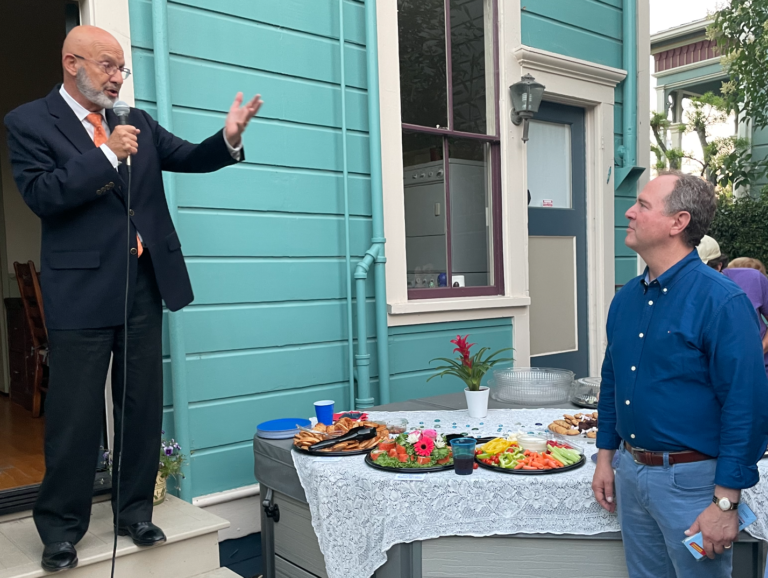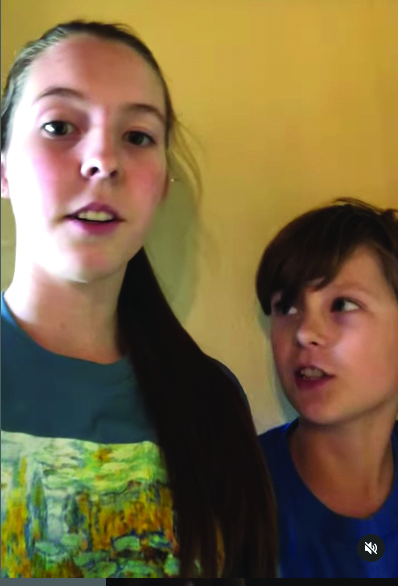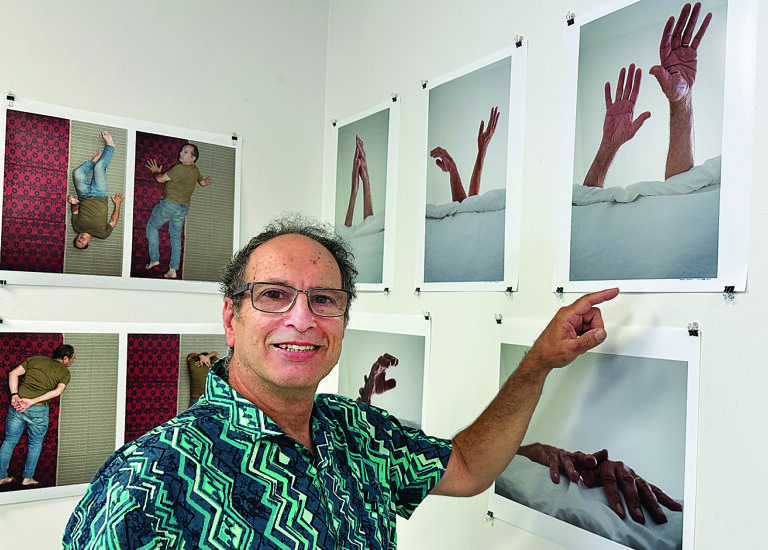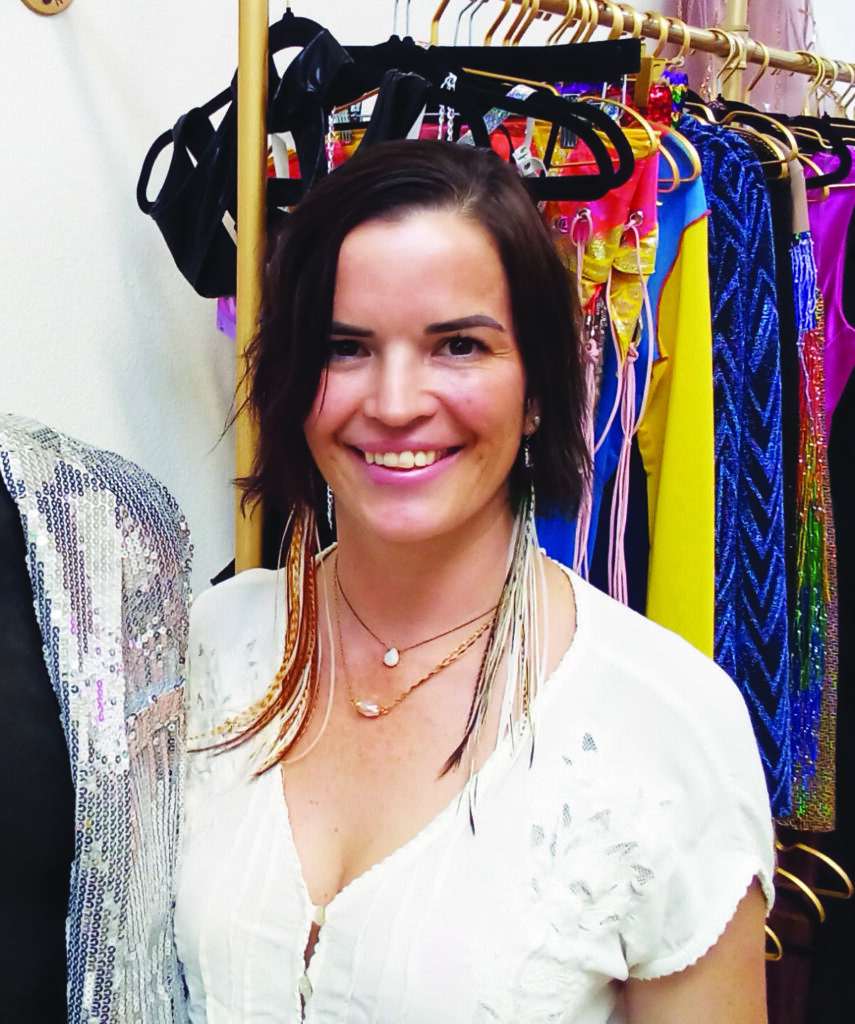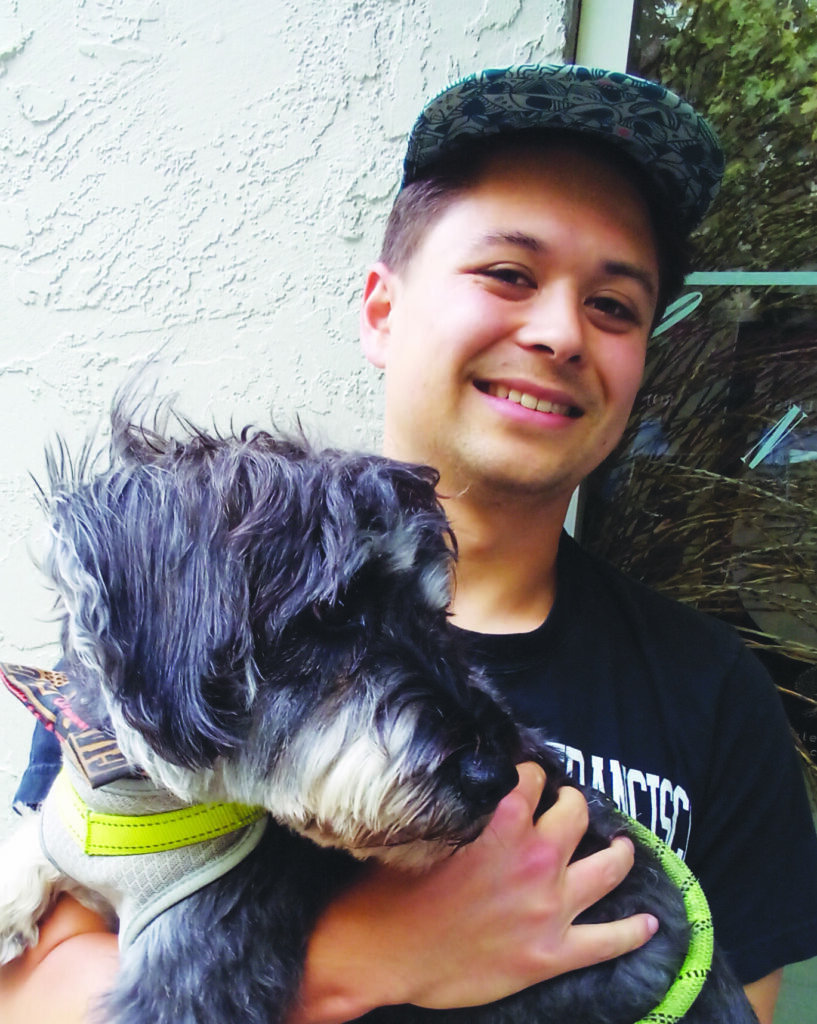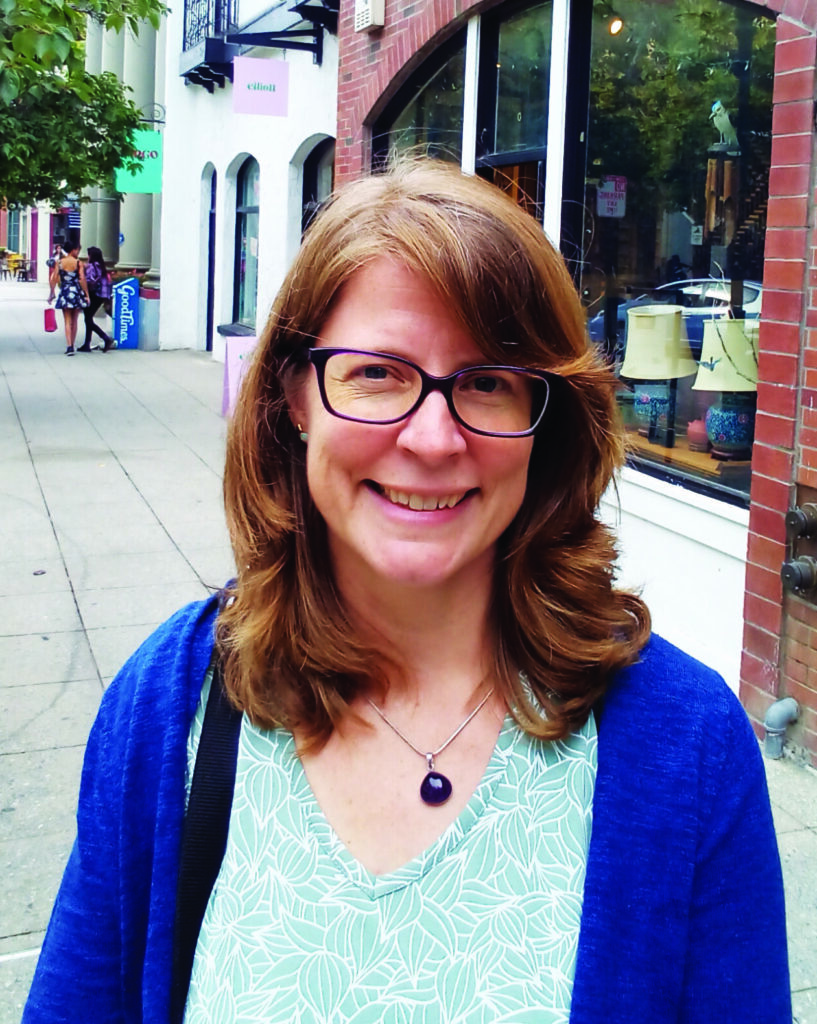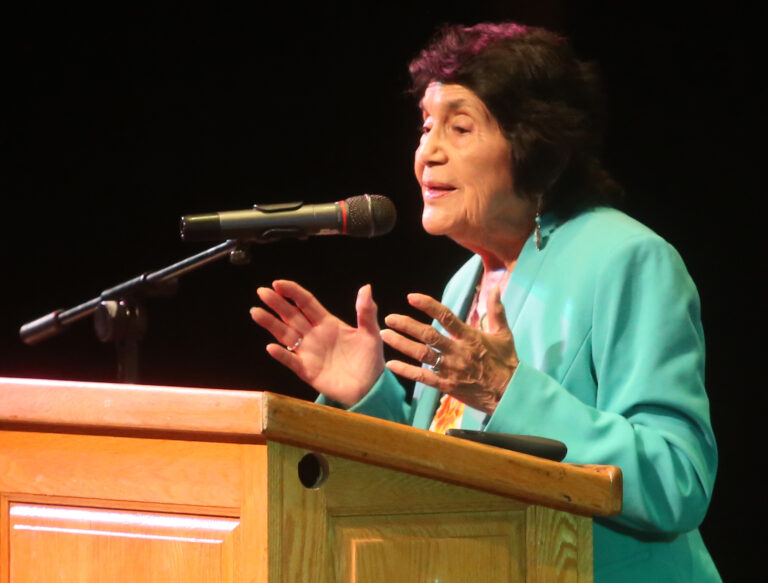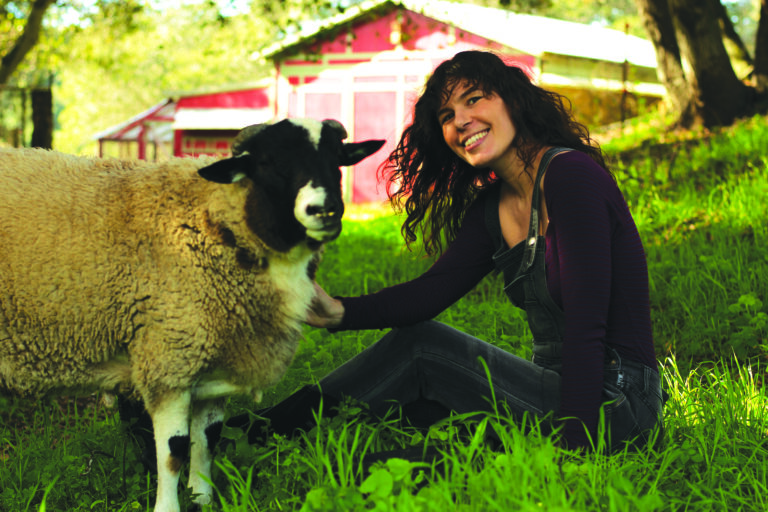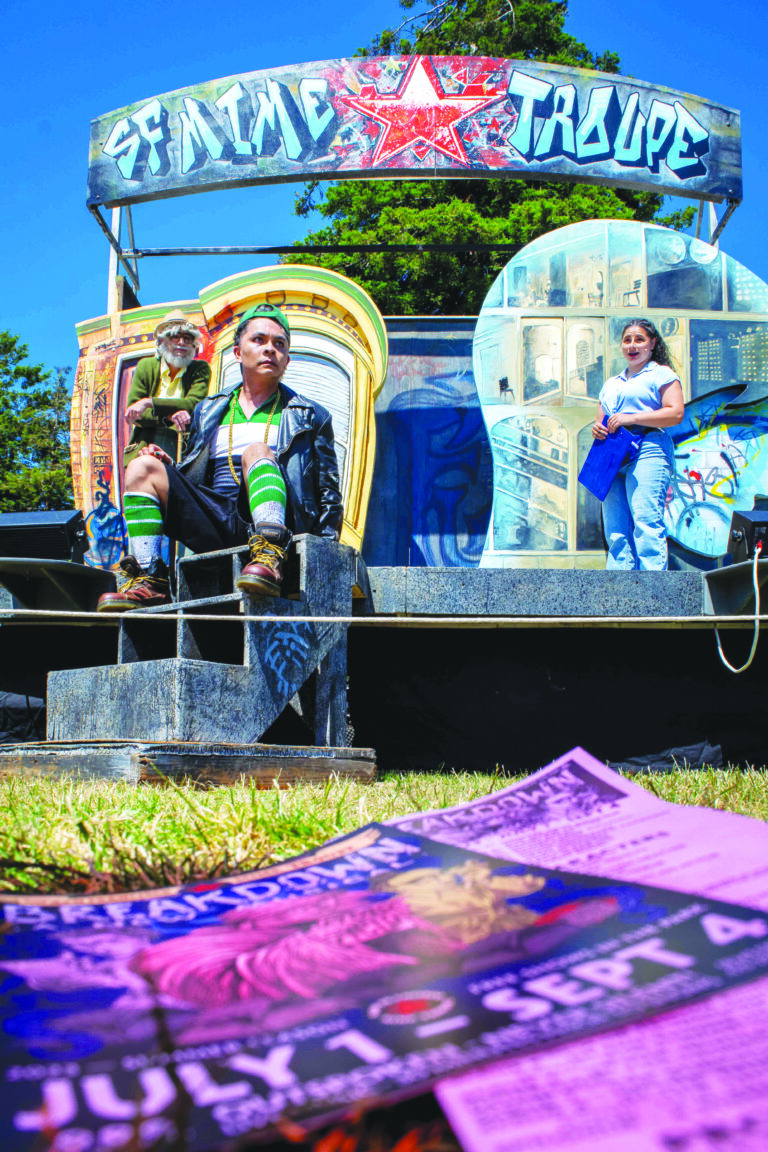It might be a hot August day outside, but Royal Oaks resident Helbard Alkhassadeh has been preparing for the end-of-year rains for the last several months. For the past nine years—and the last seven as a nonprofit—he and his wife, Camilla Landon Alkhassadeh, have rescued livestock and other animals at their Little Hill Sanctuary.
“We’re getting the shelters built and soil ready so it doesn’t turn into mud,” Helbard says. “That way it’s comfortable for the animals and easier for us to maintain them.”
As the name implies, Little Hill Sanctuary sits on a little hill in the outskirts of Watsonville. Or at least, that’s where the Alkhassadeh’s house sits. Below is the actual sanctuary of fields and shelters. When the local culverts fill up with sand, combined with the downpour from extreme atmospheric rivers as experienced last winter, the fields and structures below flood.
“We had about two to three feet of water,” he says. “Once the rain stopped, we had several months of mud that was nine to twelve inches deep. My tractor couldn’t go through the area.”
Adds Camilla, “It’s wild how much more you recognize the [environmental] impact when you have animals and gardens to tend to. It’s almost like we’re living at a different place than we were even two or three years ago.”
The four-acre sanctuary is home to 100 different animals on any given day, from chickens to 850-pound hogs. They’re also raising funds for a 20-acre site that won’t have the same flooding problems.
But that’s a challenge.
“Right now it’s set up as a cash-only purchase, which means we’d have to have the entire funding to move forward,” Camilla says. “We’ve done fundraising but we’re really just not getting close to what properties like that cost in this area.”
Throughout the country, state and county, animal sanctuaries like Little Hill provide long-term homes, sometimes with the option for adoption, to rescued and at-risk animals. They can be a place for people who no longer can—or want to—take care of their animals to go and make sure the creatures still have a good home. Sanctuaries can also provide space for animals during natural disasters like the recent Pajaro flooding or 2020’s CZU Lightning Complex Fire.
But Little Hill and other local sanctuaries are finding it increasingly difficult to operate with the extreme seasonal conditions created by climate change.
“It’s strange to see the effect of climate change in my lifetime after hearing about it for 40 years,” Helbard said.
IT’S GETTING HOT IN HERE
According to the National Oceanic and Atmospheric Administration, June 2023—only two months ago—was the warmest month ever in the 174-year global climate record. The average global surface (land and water) was 1.89 degrees Fahrenheit warmer than the 20th century average. That makes it the 47th consecutive June and the 532 consecutive month above that average.
“Have you heard the phrase, ‘This summer is the coldest summer for the rest of your life?’” asks UC Santa Cruz Professor of Environmental Studies, Michael Loik.
“Well that’s what we’re in for,” he answers.
Loik has studied climate change for the last three decades, but is still surprised at the rate at which he has seen it increase.
“It’s affecting everyone, everywhere,” he said. “We used to talk about how things like wildfires, floods, droughts and storms would happen in the future. Here we are 20 to 30 years later and these things are impacting us everywhere.”
NO CLUCKIN’ AROUND
“2020 was the worst experience of my life,” Ariana Huemer recalls.
She operates Eeyore’s Hen Harbor, a three-acre, Felton nonprofit sanctuary for poultry. Founded in 2012, Hen Harbor has saved or adopted out thousands of birds with over 2000 this year. Huemer was one of the thousands of people who evacuated when the flames grew close, only she also had hundreds of feathered friends to bring with her.
“It was daytime but it looked like night.”
True to her convictions, even after neighbors evacuated, Huemer continued to rescue other poultry from abandoned ranches in the area.
As if floods and fires weren’t enough, local sanctuaries—particularly with mammals—are feeling the effects of climate change in their wallet.
“When we started doing this, our hay bales were less than $15,” Camilla Landon Alkhassadeh says. “Now they are pushing $40. It’s such an incredible price hike in such a short amount of time.”
“Our feed stores are telling us they’ve lost 60% of their hay brokers in the past five or six years,” explains Helbard Alkhassadeh. “Because they’ve lost that many growers.”
HOW SWEET IT IS
Then there’s Sweet Farm.
Founded in 2015 in Half Moon Bay by married couple Nate Salpeter, a tech consultant, and Anna Sweet, CEO of J.J. Abrams’ Bad Robot Games, Sweet Farm operates as an animal sanctuary and working farm.
Salpeter said that the 2020 fire evacuation, combined with the rising cost of livestock feed, the high cost of Bay Area living and the restricted access to water for animals and crops, made them look for a new home outside of California. In May 2022, they moved their entire operation, including 140 animals, to 50 acres of land in Himrod, New York, roughly 74 miles southeast of Syracuse.
“A lot of thought went into it,” Salpeter explained. “First and foremost, is it the right thing for our animals? Is it the right thing for our programs?”
But what really sets Sweet Farm apart from other sanctuaries is their innovative approach to addressing the impact factory farming has on climate change.
“We are scaling the local level of impact, globally, by supporting amazing practices, processes and technologies,” Salpeter says.
For example, they donated cells from one of their rescue pigs, Dawn, to California-based company Mission Barns. Those cells were used to cultivate meat the company hopes to sell to stores and restaurants once regulators approve. The company is expecting to do this soon, since the state approved two other companies—Upside Foods and Good Meat—to sell this past June.
“It has the potential to feed millions, if not billions, in the future,” Salpeter exclaims. “Meanwhile, the animals live here, happy and healthy.”
Sweet Farm is also working on genetically modifying crops to tell farmers when they need to be watered, if they are diseased and other threatening factors. By using light signals, like a lawn changing from green to yellow, farmers will be able to increase their yields while using less resources.
“About 40% of food that’s grown goes to waste in the field,” Salpeter explained. “The carbon footprint left by agriculture is massive. If we can boost yields simply by reducing crop loss, that has major climate and social impacts.”
“I refer to it as a ‘portfolio approach,’” Loik said. “There’s not going to be one fix to solve everything. It’s going to take a lot of coordinated, different things that chip away at the emissions we’re putting out now and for the last 150 years and more.”
According to a 2019 NASA report, the carbon dioxide molecules—one of the leading causes of climate change—not absorbed by plants can stay in the atmosphere anywhere from 300 to 1000 years. The report also states carbon dioxide concentration has increased 47% since the beginning of the Industrial Age with half of the increase in the past 300 years occurring since 1980, and a quarter of that since 2000.
“On a geological scale it’s certainly reversible,” Loik admits. “But at the rate we’re currently going, it’s going to take a while to reverse what we set in motion.”
He sees more and more people experiencing what he calls “climate anxiety,” which can often be so overwhelming it leads many to do nothing at all. However, he wants the public to know even the smallest changes can have the biggest impacts.
“One of the things that people can do that has the biggest impact is eating lower on the food chain,” Loik said. “It takes a tremendous amount of land, water and resources to grow animals for meat. If that same amount of land and water was used to grow edible plants, the amount of greenhouse gas emissions that go into the atmosphere is quite a bite lower.”
Back in Royal Oaks, it’s this idea that contributed to Little Hill’s founding seven years ago.
“We try to make people aware of where their food comes from,” Helbard said. “We believe how we treat life on Earth is a reflection of how life treats us.”


